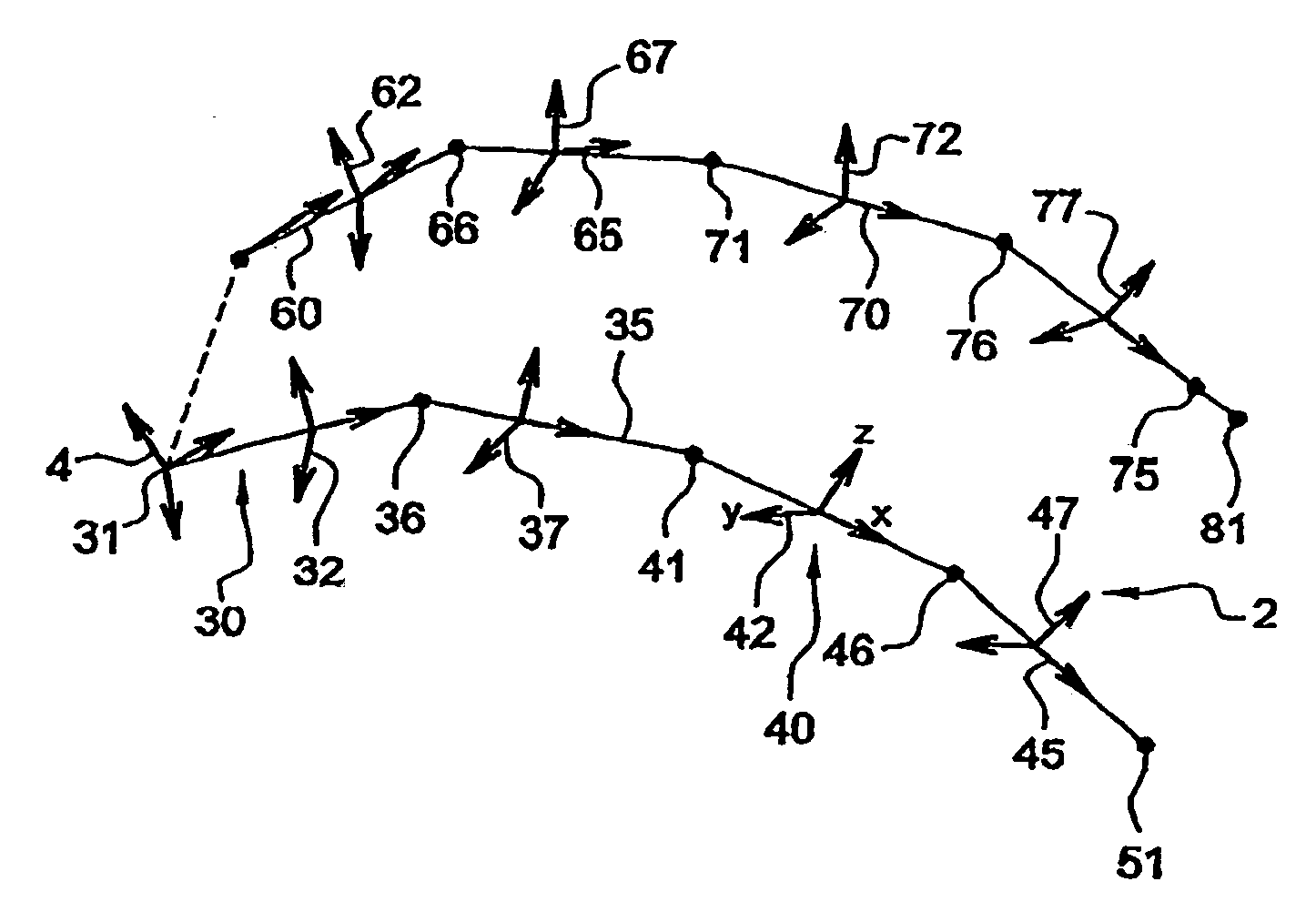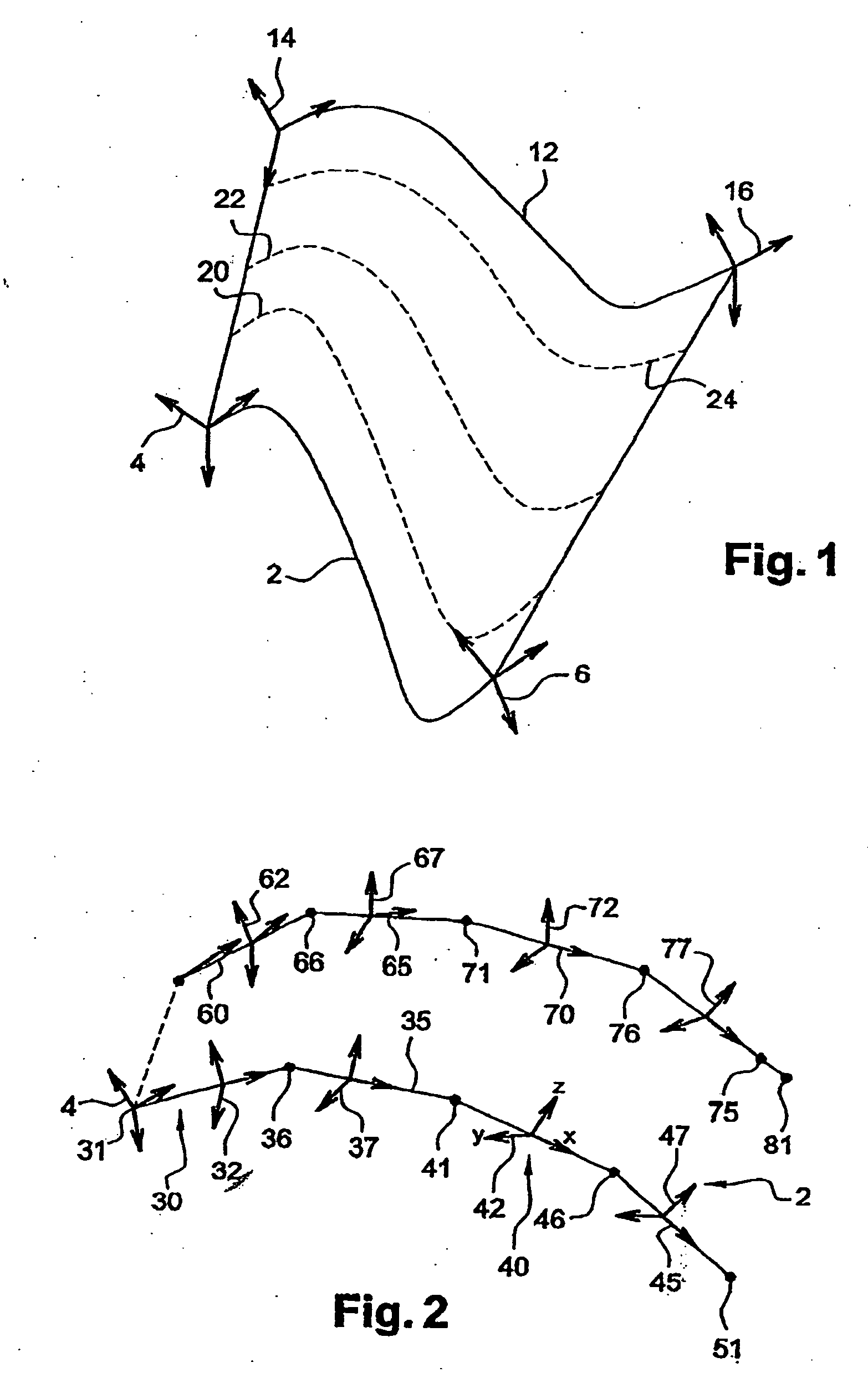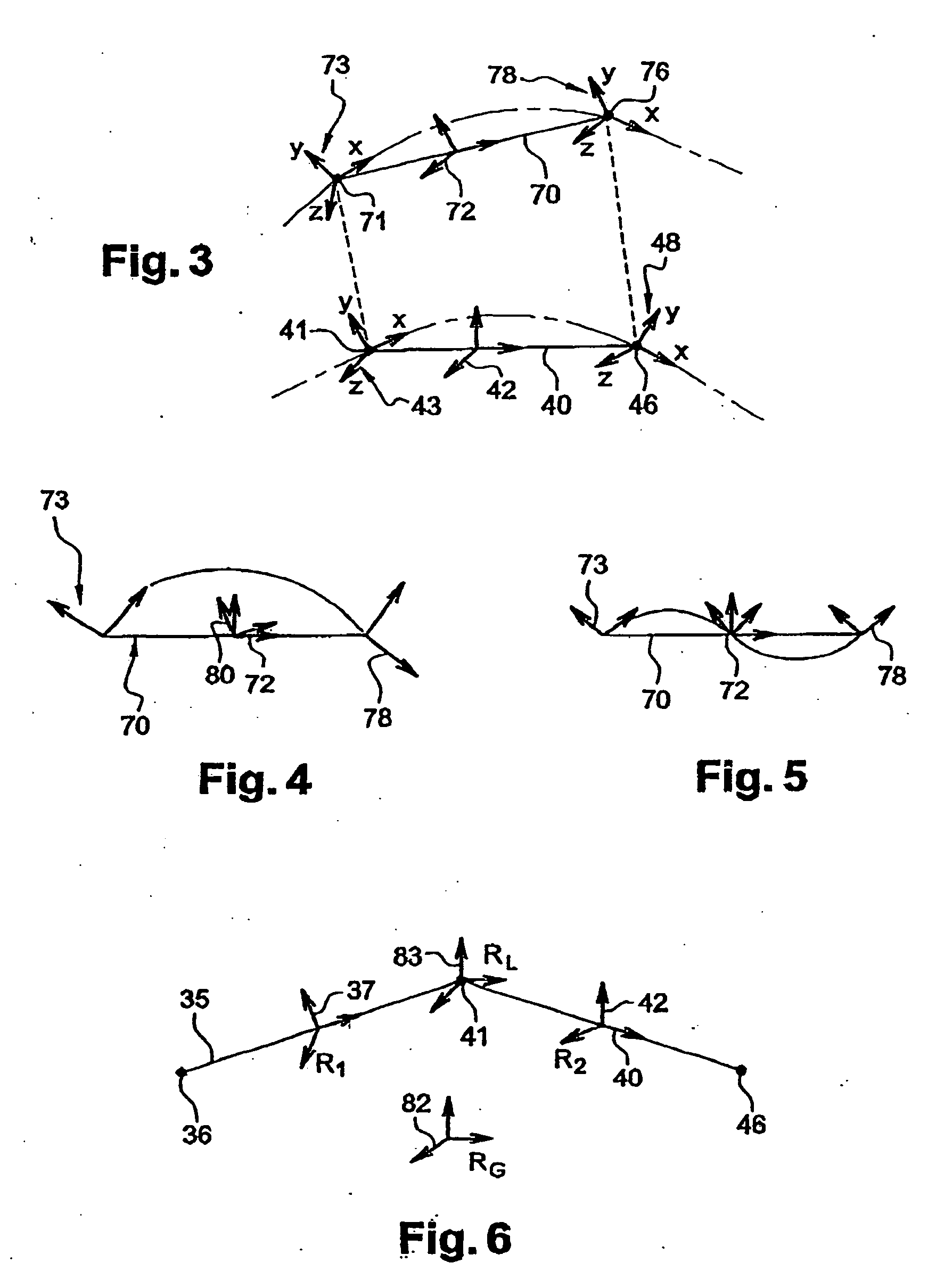Solver for a restrained deformable system with released degrees of freedom
- Summary
- Abstract
- Description
- Claims
- Application Information
AI Technical Summary
Benefits of technology
Problems solved by technology
Method used
Image
Examples
Embodiment Construction
[0041] The description of slender-body flexible systems in reference to FIGS. 1-5 is useful for understanding the general operation of a solver, even though it does not address specifically the problem of limited degrees of freedom, but rather co-rotational updating in the prior art incremental total Lagrangian formulation. For the sake of clarity, the process disclosed in the NAFEMS World Congress paper (thereafter the NAFEMS paper) is discussed again here. In the first part of the present description, one considers the case where the predetermined reference displacement of the flexible system at both ends is fully determined.
[0042] The purpose of the process is to determine the behaviour of the flexible system, when submitted to predetermined displacement boundary conditions. Reference 2 in FIG. 1 designates the starting configuration of the flexible system. At both ends of the system, frames of reference 4 and 6 are represented. These frames of reference are local frames of refe...
PUM
 Login to View More
Login to View More Abstract
Description
Claims
Application Information
 Login to View More
Login to View More - R&D
- Intellectual Property
- Life Sciences
- Materials
- Tech Scout
- Unparalleled Data Quality
- Higher Quality Content
- 60% Fewer Hallucinations
Browse by: Latest US Patents, China's latest patents, Technical Efficacy Thesaurus, Application Domain, Technology Topic, Popular Technical Reports.
© 2025 PatSnap. All rights reserved.Legal|Privacy policy|Modern Slavery Act Transparency Statement|Sitemap|About US| Contact US: help@patsnap.com



